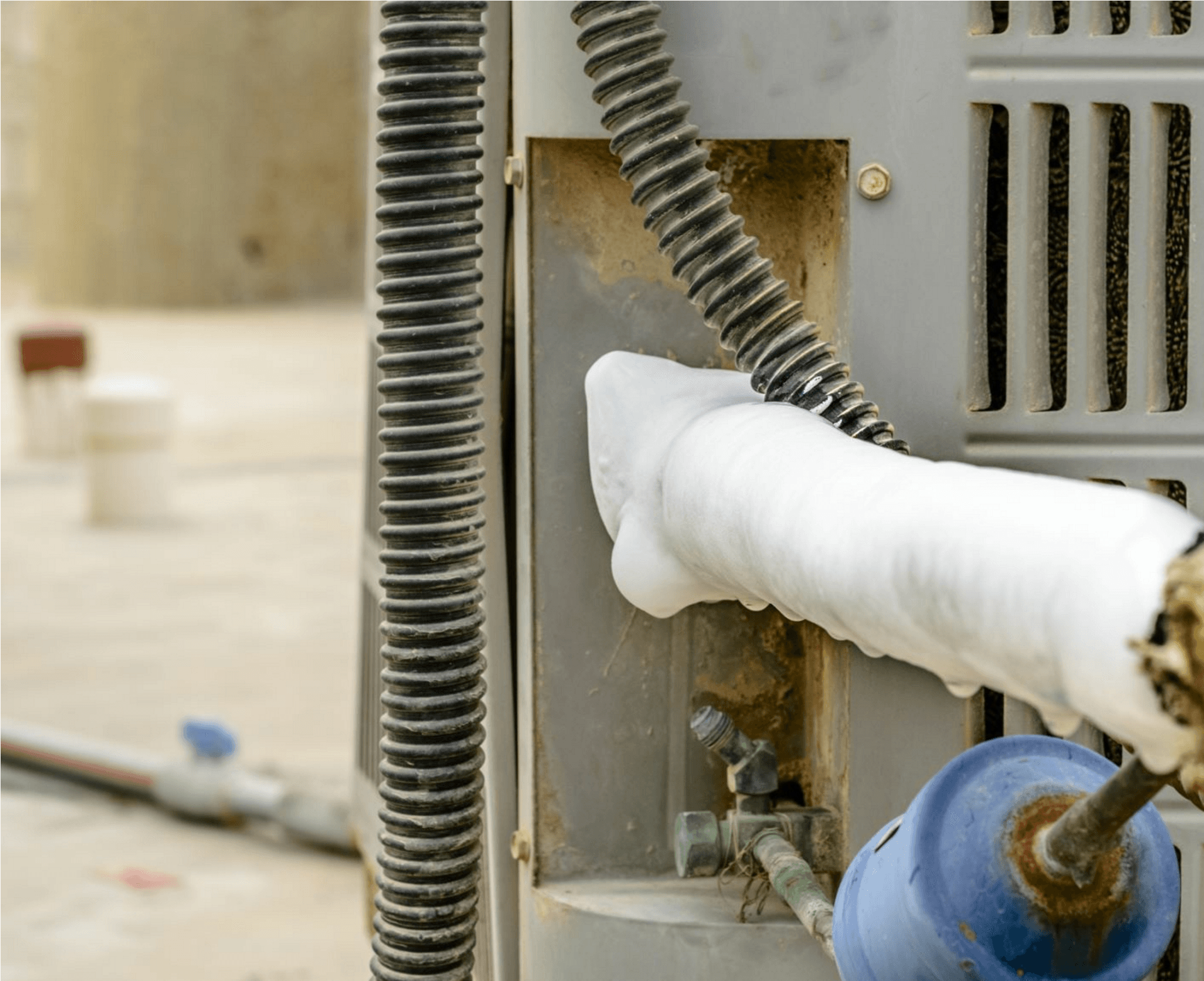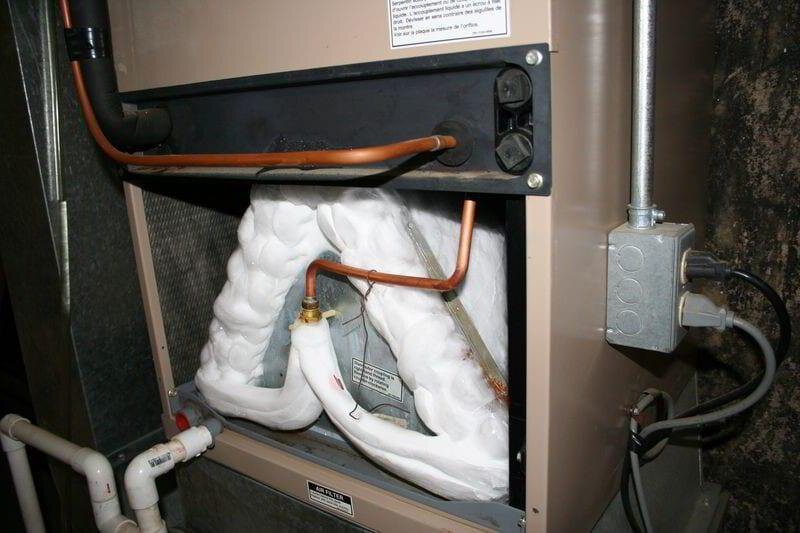We have discovered this post about Have a Frozen AC Line? Here’s How to Fix It down the page on the net and figured it made perfect sense to talk about it with you in this article.

Intro
Finding that your air conditioning pipeline is frozen can be concerning, especially throughout warm summer months when you rely upon your ac system one of the most. Understanding what to do in such a scenario is critical to avoid additional damage to your air conditioning system and ensure your comfort inside.
Understanding the Causes
A number of factors can add to the cold of an air conditioner pipe. Understanding these reasons can aid you resolve the concern efficiently.
Lack of Airflow
One common reason for a frozen air conditioner pipeline is inadequate airflow. When the airflow over the evaporator coil is limited, it can cause the coil to go down below freezing temperature level, resulting in ice development on the pipeline.
Low Refrigerant Levels
Inadequate refrigerant degrees in your air conditioning system can also result in an icy pipe. Reduced refrigerant degrees can trigger the stress in the system to drop, leading to the cold of moisture on the evaporator coil.
Cold Weather Conditions
In colder environments, freezing temperature levels outside can add to the cold of air conditioning pipelines. If your AC device is not appropriately insulated or if there are leakages in the ductwork, cool air can infiltrate the system, causing the pipe to ice up.
Dirty Air Filters
Dirty or clogged up air filters can restrict air flow in your air conditioning system, bring about numerous concerns, consisting of an icy pipe. It's important to change or cleanse your air filters on a regular basis to guarantee appropriate air flow and prevent ice accumulation.
Indications of a Frozen Air Conditioning Pipe
Acknowledging the indications of a frozen air conditioner pipeline is critical for timely activity.
Lowered Airflow
If you observe a significant reduction in air flow from your vents, it might show a frozen pipe.
Ice Buildup on the Pipe
Visible ice build-up on the refrigerant line or the evaporator coil is a clear indication of a frozen AC pipeline.
Odd Sounds from the Unit
Unusual sounds, such as hissing or bubbling, originating from your AC unit can indicate that there's ice existing on the pipe.
Immediate Actions to Take
When faced with an icy AC pipeline, it's necessary to act swiftly to stop more damage to your air conditioning system.
Switching off the a/c
The very first step is to shut off your ac system to stop the system from running and exacerbating the problem.
Looking for Blockages
Examine the area around the interior unit for any kind of obstructions that may be obstructing air movement, such as furniture or curtains.
Defrosting the Pipe
You can use mild methods like positioning towels soaked in cozy water around the icy pipeline to assist thaw it gradually.
Safety nets
Taking safety nets can aid prevent future incidents of a frozen air conditioning pipe.
Normal Maintenance Checks
Schedule routine maintenance consult a professional HVAC service technician to make certain that your air conditioner system is running successfully.
Changing Air Filters
Regularly replace or cleanse your air filters to prevent air movement limitations and keep optimal performance.
Insulating Exposed Pipes
If your air conditioner pipes are subjected to chilly temperature levels, consider protecting them to avoid cold throughout cold weather.
Looking For Professional Help
If DIY methods stop working to settle the concern or if you're not sure concerning exactly how to proceed, it's ideal to look for assistance from a certified HVAC professional.
When DIY Methods Fail
If your efforts to thaw the pipe or address various other issues are not successful, it's time to hire a specialist.
Relevance of Hiring a Professional HVAC Technician
A qualified HVAC technician has the expertise and devices essential to diagnose and fix concerns with your a/c system safely and successfully.
Verdict
Taking care of an icy AC pipeline can be a discouraging experience, yet knowing how to react can aid minimize damages and restore convenience to your home. By recognizing the reasons, identifying the signs, and taking punctual action, you can properly deal with the concern and protect against future events.
G UP? HOW TO FIX IT?
It happens all over America. And the rest of the world probably. It’s the hottest day ever and for some darn reason your AC isn’t cooling the house. You fiddle with the thermostat to try and fix the problem. Nada. All you can do now is go outside and check the AC unit. You make your way there and find your air conditioner unit is frozen! But how?
In this post we’ll cover how you can tell that your air conditioner has frozen (other than the obvious reasons), what could have caused the freeze, and some of the things you can do about your AC freezing up. And if you have a frozen heat pump condenser, read our blog about it to learn what to do! But remember, it is always best to avoid your AC freezing up with an AC tune up. And if you are moving into a home, it's critical to get HVAC inspection so that you are aware of an AC problems before you move in.
Keep reading and you may be able to fix the frozen AC yourself. If you can’t, call an HVAC specialist. If you live in Maryland, call SuperTech HVAC for AC repair. We’ll take care of it.
How Does An Air Conditioning Unit Work?
How you probably imagine an AC works is wrong. Contrary to popular belief, an AC system does not inject cool air into a building. Instead, it removes the heat from inside and transfers it outside. Cool huh? (Pun intended).There are 4 major components among the 3 stations of an air conditioning system: the evaporator coil, the compressor, the condenser, and the refrigerant – a special chemical that links everything together through a closed loop system.
Station 1:
Warm indoor air is sucked into the return vent, through a filter, and blows over the evaporator coil. The heat is absorbed into the cold refrigerant, turning it from liquid to gas. The air, which is now cool, is blown back into the home to areas that your thermostat, i.e. you, has decided.
Station 2:
The refrigerant makes its way outside the house to the compressor, which squeezes the warm refrigerant, raising its gaseous temperature even more.
Station 3:
When the super hot vapor refrigerant reaches the condenser, the last step, the heat is expelled and absorbed into the outdoor air. The refrigerant instantly cools, which changes it from gas back to liquid form. The cold liquid refrigerant is now ready to return to station 1 and repeat the process.
Is Your AC Freezing Up? Here Are The Signs:
As you may have guessed, your air conditioner unit freezing up on a hot day is not normal.
If this happens, there's no need to panic. Often the issue can be solved with a little troubleshooting. If the AC unit is left frozen for too long however, you may find yourself with a bigger problem.
First things first, how do you know your AC is frozen?
Well, the obvious sign is the ice on your refrigerant line-set pipe. Simply check between your outdoor AC unit and your home's exterior wall to see whether your AC line frozen.
You might also have a frozen evaporator coil. This one's not as easy to check. You'll need to open a panel on the indoor unit to inspect. Don't do this unless you're handy. If you aren't, call an HVAC pro like SuperTech HVAC or you may damage something in the process.

As a devoted person who reads about Why Is Ice On My Outside Air Conditione, I imagined sharing that segment was really helpful. Liked our entry? Please share it. Help somebody else locate it. Many thanks for your time. Visit us again soon.
Click Here